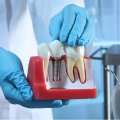Laser Teeth Whitening Technology: A Bright Smile with Modern Innovation
A dazzling smile has the power to boost your confidence and enhance your appearance. But as time passes, teeth can become stained from food, drinks, smoking, or simply age. That’s where modern dental technology steps in. One of the most effective ways to achieve a whiter smile today is through laser teeth whitening. This advanced method promises quick results with minimal discomfort, making it a popular option for people seeking a radiant smile.
Today, we’ll explore how laser teeth whitening works, its benefits, what to expect during the procedure, who it’s best suited for, and how it compares to other whitening methods.
What Is Laser Teeth Whitening?
Laser teeth whitening is a professional cosmetic dental procedure designed to lighten the shade of your teeth using a combination of whitening gel and laser light. Unlike over-the-counter whitening products that may take weeks to show mild results, laser whitening can brighten your teeth significantly in a single session.
This method involves applying a hydrogen peroxide-based gel to the teeth and then activating it with a laser. The laser speeds up the chemical reaction, breaking down stains more quickly and deeply than traditional whitening methods.
How Does It Work?
The procedure for laser teeth whitening typically follows these steps:
- Consultation and Preparation
Before the treatment begins, the dentist will examine your teeth and gums to ensure you are a good candidate. They may take photos to document the before-and-after results. Your teeth will then be cleaned to remove any surface plaque or debris.
- Protection
A rubber or plastic guard is placed in your mouth to keep it open, and your gums are covered with a protective gel or shield. This is to prevent any irritation from the whitening gel.
- Application of Whitening Gel
A highly concentrated bleaching gel, often containing carbamide peroxide or hydrogen peroxide, is meticulously applied to the teeth surface.
- Laser Activation
A laser is then directed at your teeth. The light activates the whitening gel, accelerating the breakdown of stains and discoloration.
- Rinse and Repeat
The gel may be removed and reapplied several times during a single session, depending on the desired level of whiteness.
- Final Rinse and Fluoride Treatment
Once the desired shade is achieved, the dentist will rinse your mouth and may apply a fluoride solution to reduce sensitivity.
Benefits of Laser Teeth Whitening
There are several reasons why patients choose laser whitening over other methods:
Fast Results
You can see noticeable results after just one session, making it ideal for events like weddings or interviews.
Effective Whitening
The laser enhances the power of the bleaching agent, often achieving better results than strips or trays.
Minimal Discomfort
With professional care and protective measures, the procedure is generally safe and well-tolerated.
Precision Treatment
Dentists can target specific teeth or areas, providing a more even and natural-looking result.
Boosts Confidence
A whiter smile can improve your overall appearance, making you feel more confident and attractive.
Who Is a Good Candidate?
While laser teeth whitening is suitable for many people, it’s not ideal for everyone. You’re a good candidate if:
-You have healthy teeth and gums
-Your discoloration is caused by food, drinks, or age
-You don’t have fillings, crowns, or veneers on your front teeth
However, laser whitening may not be effective on:
-Intrinsic stains (stains inside the tooth caused by trauma or medication)
-Dental restorations (fillings, crowns, and veneers won’t change color)
-Severely sensitive teeth or gum disease
If you're unsure, consult with your dentist for a personalized recommendation.
Potential Side Effects and Risks
Laser teeth whitening is generally safe, especially when performed by a dental professional. However, some individuals may experience temporary side effects, such as:
Tooth Sensitivity
This is the most common side effect and typically subsides within 24–48 hours.
Gum Irritation
If the whitening gel comes into contact with the gums, it can cause minor irritation or a tingling sensation.
Uneven Whitening
Teeth with fillings or dental work may whiten unevenly, since restorations don’t react to the bleaching agent.
To reduce the risk of side effects, always choose a licensed dental professional and follow post-treatment care instructions.
How Long Do Results Last?
Laser teeth whitening results tend to can last from 6 months to 2 years, depending on your dental hygiene habits and lifestyle. To keep the bright smile:
-Brush and floss on a daily basis
-Steer clear of stain-causing foods and beverages like tea, coffee and red wine
-Quit smoking or using tobacco products
-Schedule regular cleanings with your dentist
-Use a whitening toothpaste or touch-up treatments as recommended
What to Expect After Treatment
After your session, your teeth may feel sensitive, especially to cold or hot foods and drinks. This is normal and should diminish within a couple of days. Your dentist might advise avoiding highly pigmented foods and beverages for at least 48 hours to allow the enamel to settle.
You may also be given special aftercare teeth whitening kit products to use at home, such as desensitizing toothpaste or touch-up whitening gels.
Final Thoughts
Laser teeth whitening is a cutting-edge solution for achieving a brighter, more confident smile. It’s quick, effective, and professionally supervised, making it one of the best options for those who want immediate and noticeable results. While it may come with a higher price tag than over-the-counter methods, the speed, safety, and impact often make it worth the investment.
Before booking a treatment, consult with a qualified dentist to determine if laser whitening is right for you. With the right care and maintenance, your brilliant smile can last for years to come.
More to Read:
Previous Posts:





